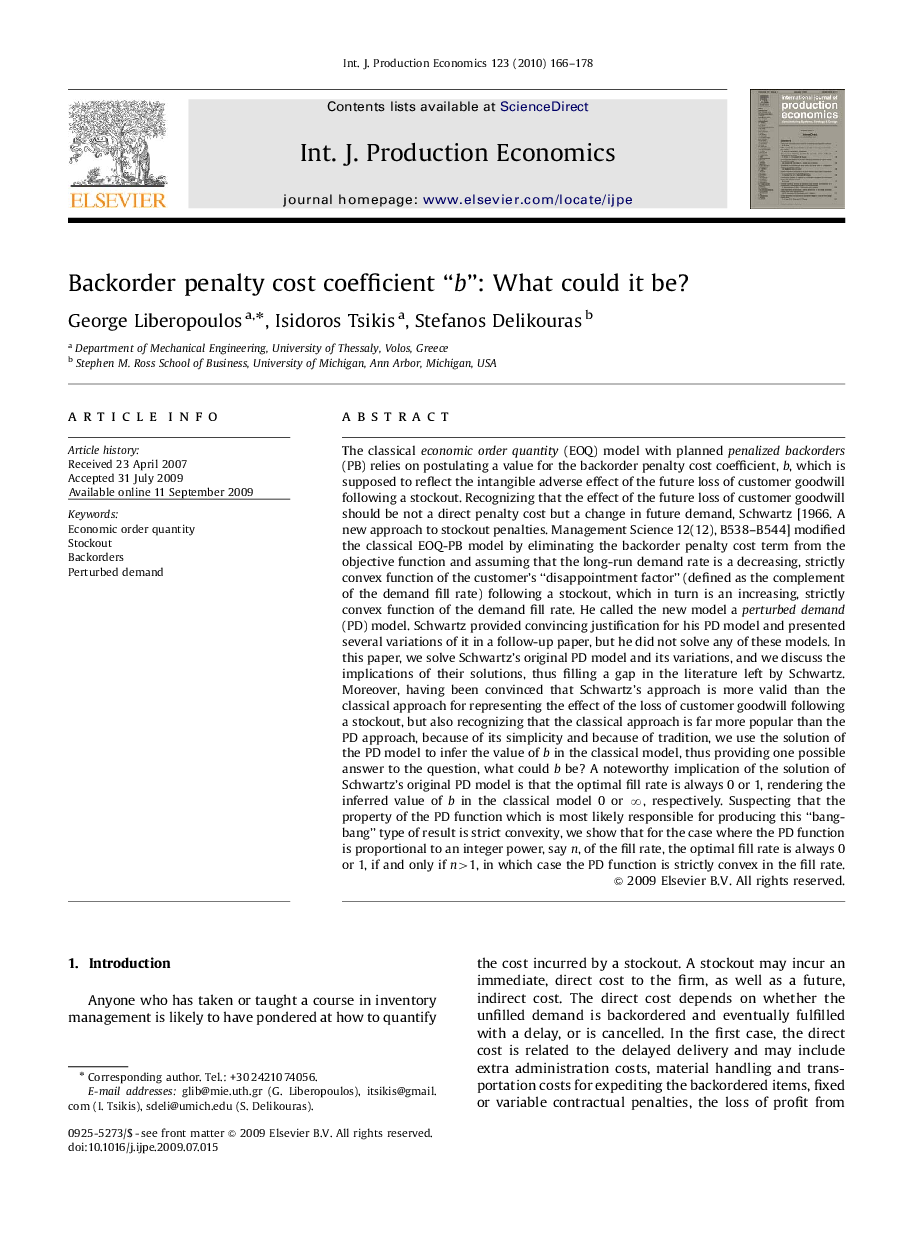| کد مقاله | کد نشریه | سال انتشار | مقاله انگلیسی | نسخه تمام متن |
|---|---|---|---|---|
| 5081605 | 1477615 | 2010 | 13 صفحه PDF | دانلود رایگان |
عنوان انگلیسی مقاله ISI
Backorder penalty cost coefficient “b”: What could it be?
دانلود مقاله + سفارش ترجمه
دانلود مقاله ISI انگلیسی
رایگان برای ایرانیان
موضوعات مرتبط
مهندسی و علوم پایه
سایر رشته های مهندسی
مهندسی صنعتی و تولید
پیش نمایش صفحه اول مقاله

چکیده انگلیسی
The classical economic order quantity (EOQ) model with planned penalized backorders (PB) relies on postulating a value for the backorder penalty cost coefficient, b, which is supposed to reflect the intangible adverse effect of the future loss of customer goodwill following a stockout. Recognizing that the effect of the future loss of customer goodwill should be not a direct penalty cost but a change in future demand, Schwartz [1966. A new approach to stockout penalties. Management Science 12(12), B538-B544] modified the classical EOQ-PB model by eliminating the backorder penalty cost term from the objective function and assuming that the long-run demand rate is a decreasing, strictly convex function of the customer's “disappointment factor” (defined as the complement of the demand fill rate) following a stockout, which in turn is an increasing, strictly convex function of the demand fill rate. He called the new model a perturbed demand (PD) model. Schwartz provided convincing justification for his PD model and presented several variations of it in a follow-up paper, but he did not solve any of these models. In this paper, we solve Schwartz's original PD model and its variations, and we discuss the implications of their solutions, thus filling a gap in the literature left by Schwartz. Moreover, having been convinced that Schwartz's approach is more valid than the classical approach for representing the effect of the loss of customer goodwill following a stockout, but also recognizing that the classical approach is far more popular than the PD approach, because of its simplicity and because of tradition, we use the solution of the PD model to infer the value of b in the classical model, thus providing one possible answer to the question, what could b be? A noteworthy implication of the solution of Schwartz's original PD model is that the optimal fill rate is always 0 or 1, rendering the inferred value of b in the classical model 0 or â, respectively. Suspecting that the property of the PD function which is most likely responsible for producing this “bang-bang” type of result is strict convexity, we show that for the case where the PD function is proportional to an integer power, say n, of the fill rate, the optimal fill rate is always 0 or 1, if and only if n>1, in which case the PD function is strictly convex in the fill rate.
ناشر
Database: Elsevier - ScienceDirect (ساینس دایرکت)
Journal: International Journal of Production Economics - Volume 123, Issue 1, January 2010, Pages 166-178
Journal: International Journal of Production Economics - Volume 123, Issue 1, January 2010, Pages 166-178
نویسندگان
George Liberopoulos, Isidoros Tsikis, Stefanos Delikouras,